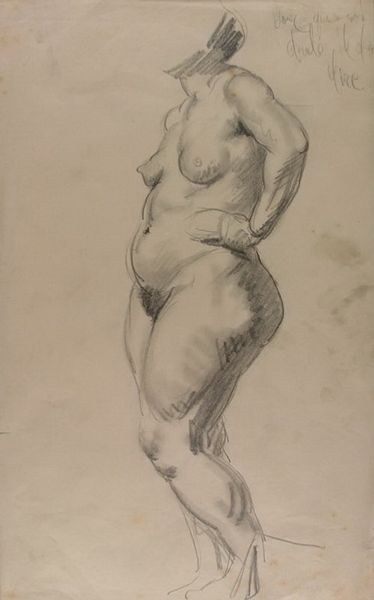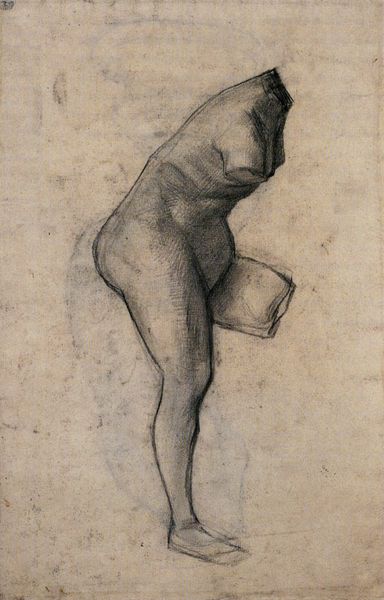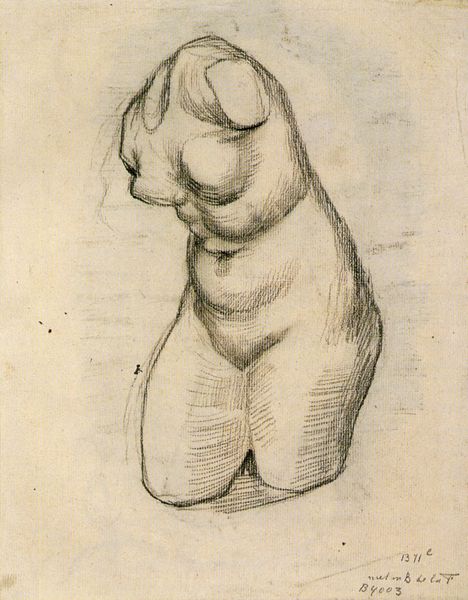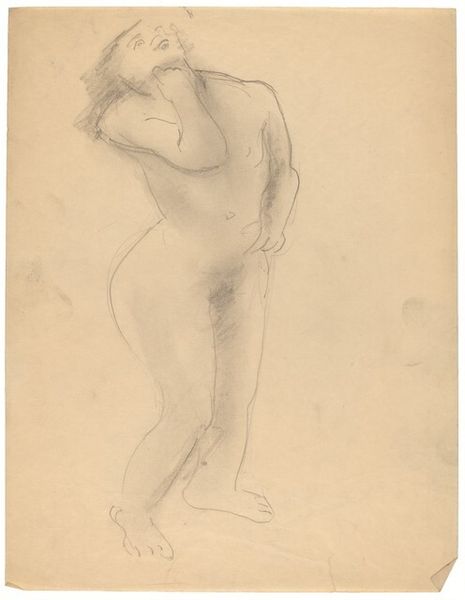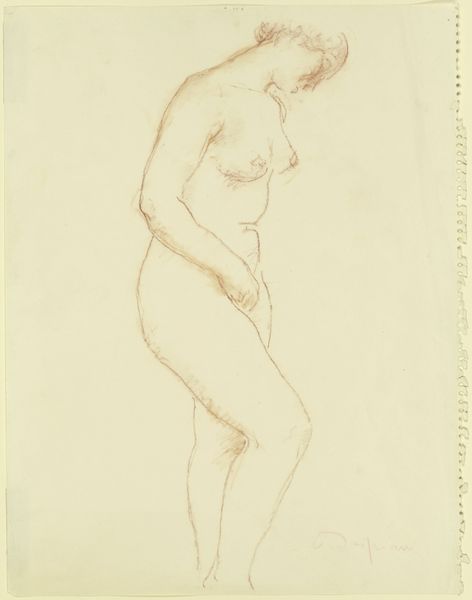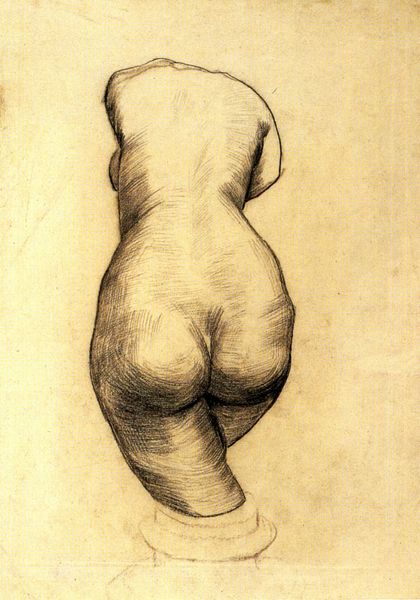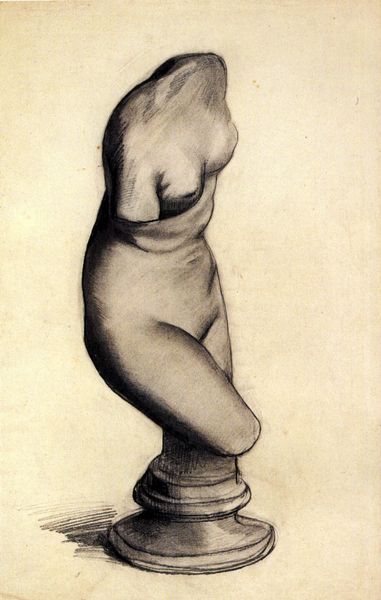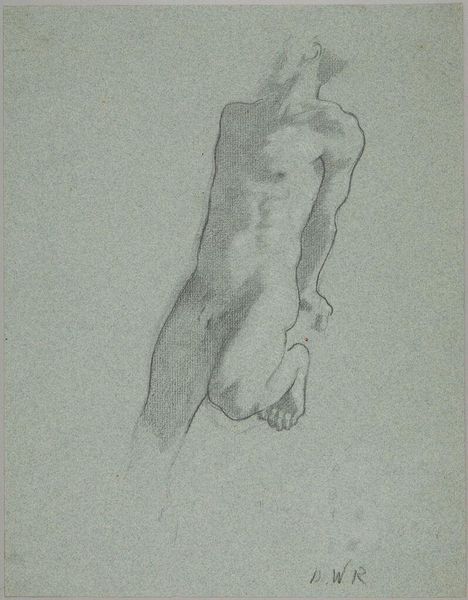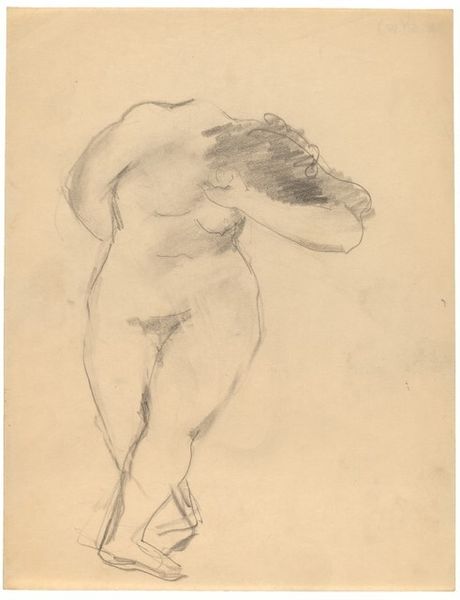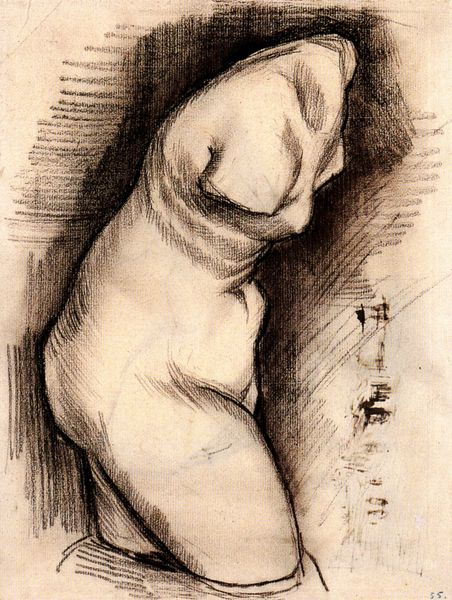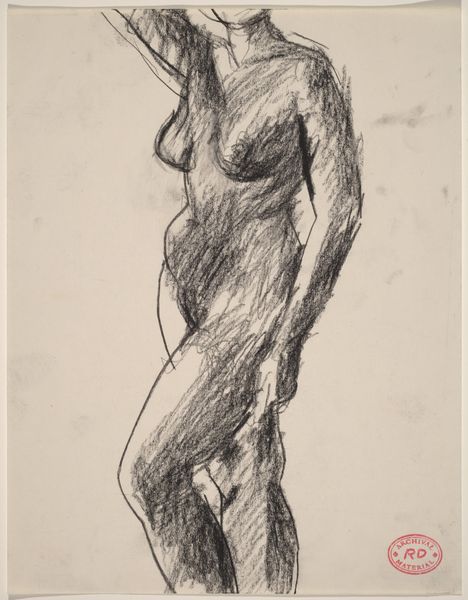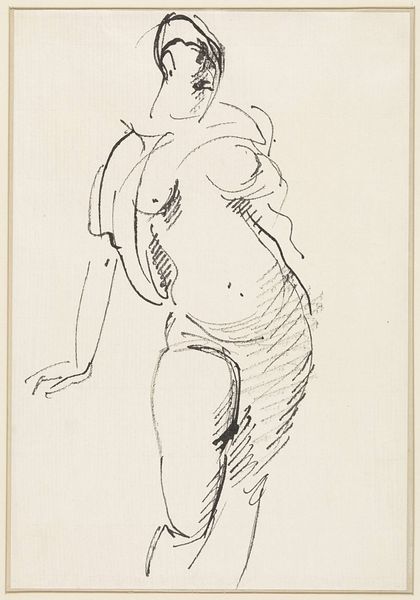
drawing, pencil
#
drawing
#
statue
#
figuration
#
pencil drawing
#
sketch
#
pencil
#
post-impressionism
#
academic-art
#
nude
Copyright: Public domain
Curator: Vincent van Gogh created this pencil drawing, "Torso of Venus," in 1887 while in Paris. It’s currently housed in the Van Gogh Museum in Amsterdam. Editor: It looks so… tentative. Almost as if the artist is feeling his way around the form, testing its volume and weight on the page. Curator: Exactly. Van Gogh was attending Fernand Cormon’s atelier at the time, diligently copying plaster casts. These academic exercises were crucial to mastering form, and this is one of many such studies he produced, grappling with classical ideals within a rapidly changing art world. Think of how this embodies both the past and the future of art at that moment. Editor: I notice the hatching, those closely-spaced parallel lines that define the shadow. The pressure is varied and quite expressive, but almost mathematical in the way they model volume in precise gradations of light. Curator: These statues, specifically the female nude, occupied a peculiar role. They represented an artistic heritage Van Gogh simultaneously embraced and resisted, especially when considering his views on depicting the human form and its relation to nature and reality. There's a tension here: the ideal versus his increasingly personal, subjective mode of seeing. Editor: The very notion of a fragment—the torso isolated— heightens the sense of the idealized, abstracted form, and draws more attention to the surface quality. I also can't help but think of how his approach foreshadows modernist principles like the incomplete artwork and embracing imperfection. Curator: It prompts us to question what "perfect" even means, culturally and artistically, particularly when looking at the classical figure through a late 19th-century lens. There’s something inherently vulnerable about it. It's like this age-old symbol has been laid bare for reinterpretation, inviting conversations about identity, representation, and the very construction of beauty. Editor: It really makes you see both the sculpture, and van Gogh, with fresh eyes. Curator: Absolutely. This simple study reveals a complex intersection of tradition, artistic struggle, and the nascent seeds of modernism, opening up the idea of beauty.
Comments
No comments
Be the first to comment and join the conversation on the ultimate creative platform.
